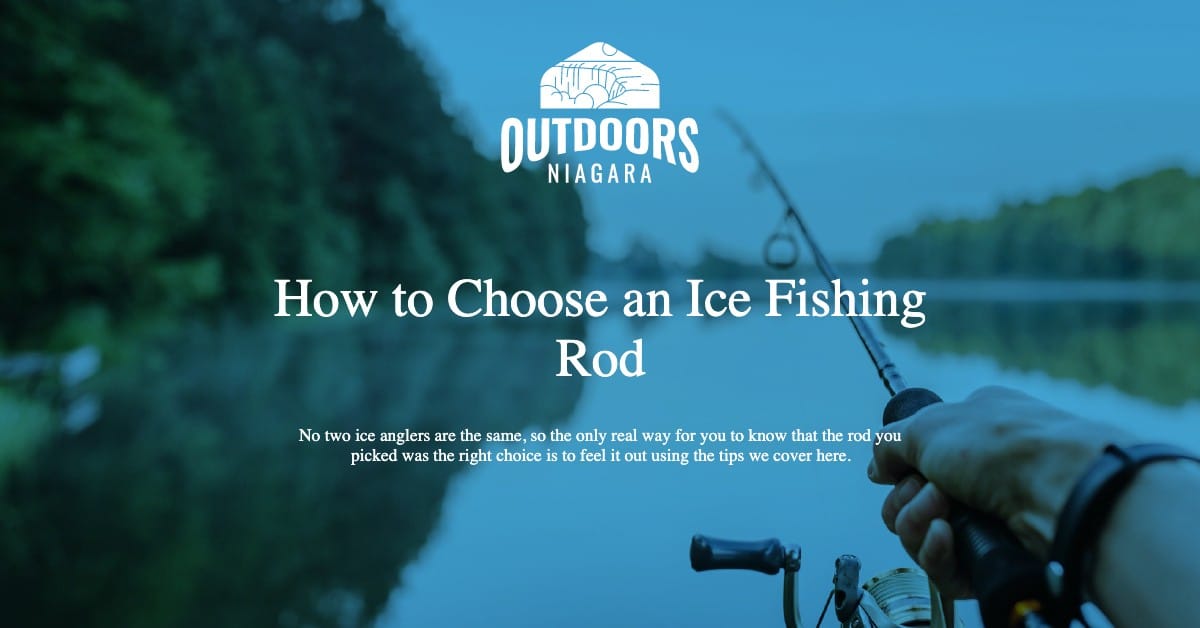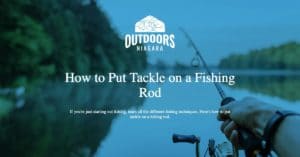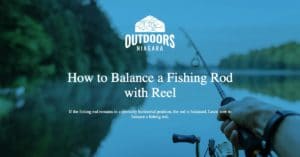If you know anything about ice fishing, you know that the most important thing to do is bring only the essentials.
And, if you’re new to the hobby, you are probably unsure about what type of fishing and type of rod you should be using, especially if you don’t have anyone to help and guide you.
As time goes on, fishing rods continue to grow in their complexity, and the action and power behind them gets more complicated as well.
Choosing which ice fishing rod to use out there is going to depend a lot on what you are fishing for and where you are fishing.
Let’s take a look at what you should take into consideration when purchasing an ice fishing rod, as well as some of the favorite ice fishing rod types of anglers today.
Contents
Think About What You’re Fishing For
What is it that you’re trying to catch? This is the main deciding factor for which kind of rod you are going to need to bring with you out onto the ice.
In the same way that you wouldn’t bring a knife to a gunfight, you wouldn’t want to bring an ultralight rod to catch pike and musky.
It’s important that you don’t overestimate the level of power that you need in a rod during winter.
Fish are far more mellow and slow-paced due to the cold and deep water, so there’s really no need to use a heavy action rod – a massive rod – just because you are trying to catch larger, more aggressive fish.
Here’s a general rule of thumb when it comes to the strength of your ice fishing rods and the fish they are best suited to catching.
- Light action rods: good when fishing for panfish, perch, bass
- Ultra-light rods: good for the panfish angler
- Medium power rods: trout, pickerel, finesse walleye techniques
- Heavy action rods: musky, pike
Remember that your line strength also has a big role to play here.
Having the right strength depending on what you are fishing for is sometimes more important than your rod’s action.
You won’t have as much room to alter the direction of the fish when you’re ice fishing, which means that you have a greater chance of snapping your line.
We suggest that you bulk up to a certain fishing line that is able to relax on the heavy power of your rod while also being able to withstand cold temperatures.
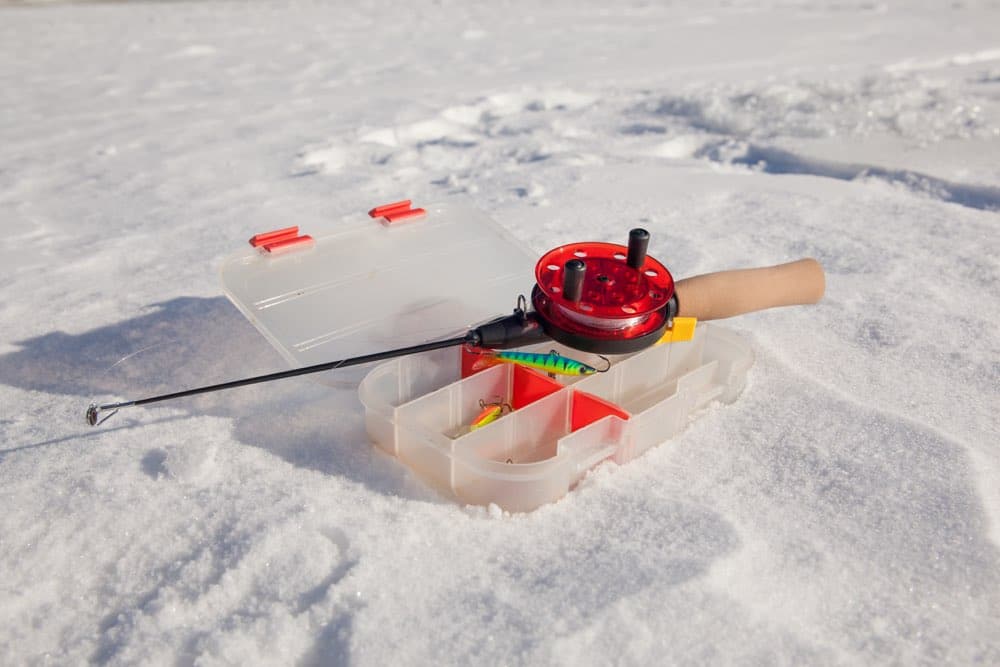
Rod Action is Important
It’s very likely that you aren’t going to be sitting in front of your hole grasping onto your rod the entire time you are ice fishing, depending on your ice fishing strategy, of course.
It’s very important that you notice every little tug and nibble on your lure so that you are able to set the hook quickly and get down to business, and this is determined by various action types.
When you are fishing with a rod that has the right action, you will quickly be able to detect any bites, and it will also influence how well you’re able to hook your catch.
- Fast-action rods: These rods will bend only at the ends (top choice for walleye)
- Ultra-fast action rods: Likewise, these rods bend only at the end
- Slow action rods: These rods bend to the bottom of the handle
- Medium action rods: These rods bend to the middle of the handle
When you’re using a slow-action rod, it’s important to remember that it will bend so much that the fish you hook is going to pull your line an inch or two before you even begin to feel anything.
With ice fishing, letting this happen means that there’s a greater chance of the fish evading the hook or getting away with your bait.
Faster action rods are generally considered the most effective for an ice fishing adventure since they let you feel every single bite, no matter how small.
What’s more, these ice fishing rod blanks aren’t strong enough to take on the biggest fish.
When you are on the market, we suggest you take the rod and bend its tip to get a feel for its flex.
Rods with a stronger backbone are also quite useful for catching larger fish.
This can provide you with a better idea about how the rod will react to nibblers so that you can get a feel for whether the rod would work for you or not.
You’ll also want to invest in a combo with spring bobber to help you maximize your catches.
You can find a good, cheap spring bobber at your local fishing bait shop, and usually at a hardware supply store.
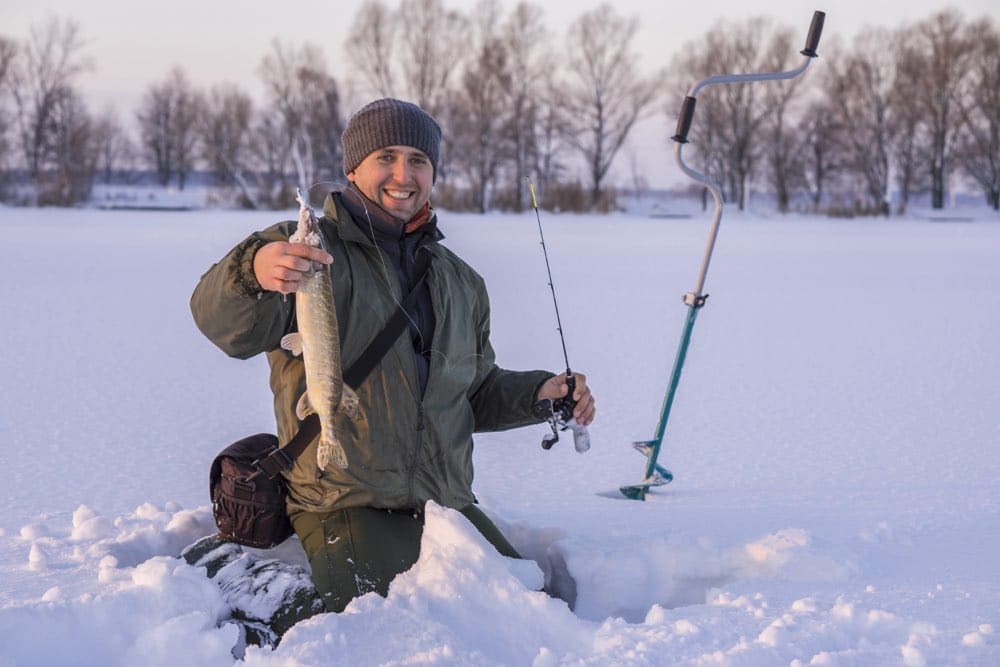
About Rod Material
In the world of fishing today, you are going to have to choose between a fiberglass or graphite rod.
It’s hard to say that one is better than the other because the topic is highly subjective to each average angler.
So, we’ll just take a look at the benefits and drawbacks of each rod material.
Fiberglass
Fiberglass rods are not as sensitive as their graphite counterparts, and they are definitely less expensive, though they do bend more along the bank, allowing you to set the hook.
Their primary benefit in comparison to a fast-action graphite rod is that they are very durable in freezing temperatures.
Graphite is more fragile, and if you are worried about the state of your rod, then we don’t recommend you choose graphite over fiberglass.
Graphite
Graphite rods are more expensive but have better performance when it comes to setting the hook, thanks to their high sensitivity.
They have more flexible banks, which means they bend quicker, providing you with a little more reaction room to yank and set your hook. They also feature graphite handles.
If you are using a fast-action graphite rod or a noodle rod, you will have the most ideal rod for ice fishing since you have the best of both worlds – a robust blank that prevents the fish from taking off and a workable end that has a quick response.
Jigging is essential when you are ice fishing, so it’s important that you have a sensitive tip to let the action on jigs move as naturally as possible.
Overall, graphite rods are generally the best choice for anglers.
The Size
Nobody wants to have too many things to lug with them onto the ice, but a common mistake ice anglers make is forgetting their gloves or goggles.
You really don’t want to have any unnecessary weight when you’re on the ice, but you have to ensure that your rod is the right size and gas the correct reel combo for the job.
You should try to make sure that you have the right combos for ice fishing.
Small rods generally seem to be the best option for ice fishing since they are light and do not take up as much space.
They are good if you aren’t planning on catching anything larger than a perch or some panfish.
However, short rods don’t have enough blank to handle the fight, which will cause your line to snap and you to throw some colorful words to the wind.
Larger rods might be more inconvenient to bring with you, but they are also able to handle the shock of hooking a big catch.
And while there are many classes of reels, as long as you get everything else right, you’ll have no problem reeling the fish in.
If you are fishing in a tight space or are using an ice fishing shelter, larger rods might not be as savvy.
Fishing rods are measured from butt to tip, and most of them will be about 6 to 8 feet in length.
Anything larger than that is simply unnecessary for ice fishing, and anything smaller should be used for small fish. 4-foot rods are excellent for kids, since they are safe to use, and also make every fish a small battle.
Remember the Eyes
The size and number of eyes on your ice fishing rod is generally completely overlooked, but it is most certainly something that you need to think about.
When you are fishing in warm water, they’re fairly irrelevant, but when you are fishing on the ice, you are going to want big eyes on your rod to let slush and chunks of ice run through without catching.
If your rod’s eyes are too small, you are going to spend a lot of time cleaning away the ice, and you also put yourself at risk of weakening your line. And who wants to clean the rod after every single drop when it’s windy and cold, anyway?
Having a decent diameter set of guides on your rods is the factor that is forgotten the most and is something that you really need to consider when choosing your ice fishing rod.
It’s also important that you’re using a rod with the right spinning reel.
Most modern rods come with either a 500-series spinning reel, 750-series spinning reel, 1000-series spinning reel, or a 2000-series spinning reel.
Of course, we can’t talk about reels without mentioning arguably the most important piece of fishing equipment there is: the line.
Most heavier ice fishing rods will use 2 to 4 pound monofilament lines, or even 4-6lb / 1.8-2.7kg monofilament lines.
The thicker the line, the stronger it is and the easier it will make it for you to catch larger fish.
Wrapping Up
When you consider your personal preference and feel and combine all of the fishing tips mentioned above, you should have absolutely no problem picking out your perfect ice fishing rod and creating the perfect setup.
Every avid ice angler is different, so the only real way for you to know that the rod you picked was the right choice is to feel it out.

